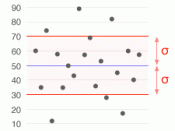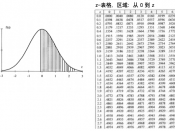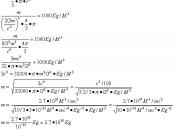Purpose:
The purpose of this experiment was to measure the velocity of various objects in freefall. Upon completion of this lab one will be able to calculate the values for acceleration and the effect of air resistance.
Apparatus:
2m clear plastic tube
Acculab sonic ranger (speed of sound = 343 m/s period = 0.03 seconds)
SensorNet software
Macintosh computer with system 6.07 or later
Blank 3.5 HD Macintosh formatted disk
Electronic mass scale, calipers
Various objects to drop
Procedure
For the first part of Experiment 1 we dropped three objects of the same shape, but of varying mass. To promote accuracy, we performed three trials for each object. The first object we dropped was a 301 gram ball of radius 1.85 cm, followed by a 225 gram ball with radius 1.82 cm, and finally a 20 gram ball of radius 1.81 cm. From this information we were able to derive the mass densities of the objects.
mass density = mass/((4/3)pR3 )
We recorded the relevant data and evaluated the average acceleration by means of the slope of the velocity graph. From the following equation we determined the magnitude of the net force acting on the object:
Force net = mass x acceleration = Force gravity + Force air resistance
Next, we calculated the errors and uncertainties:
mean = 1/N [t1 + t2 + ... + tN] ú 1/N S ti
s = [1/N S (mean - ti )2]1/2
For the next part of Experiment 1, we simply conducted three trials for a ping pong ball of mass 20 grams and radius 1.81 cm. We followed the same basic procedure as above. Upon completion of three trials, we compared the data collected for the light object with that of a heavy object.
The method used in Experiment 2 is a lot...


